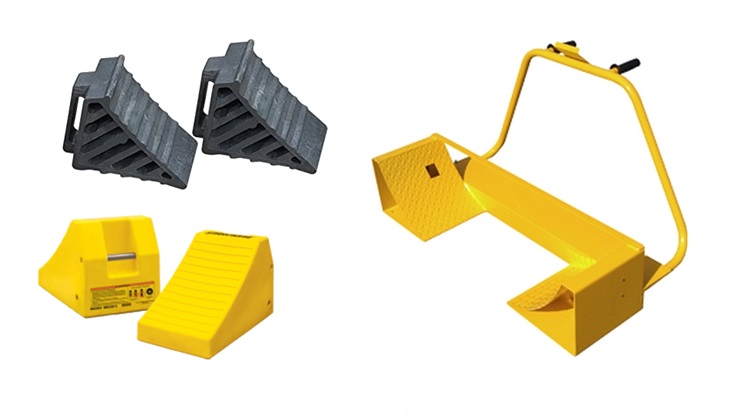Jack stands and wheel chocks
Jack stands
Jack stands are adjustable supports that are used to hold the vehicle after it has been lifted by a hoist. They are structurally designed to withstand the weight of the vehicle. Jack stands are height-adjustable and mechanically locked at the selected height. This makes them very dependable if used properly.
Before mounting, select a safe place on the vehicle body where you will support it. The jack stand is placed on a flat ground surface because it can tip over, causing the vehicle to slip off. The appropriate height of the stand is adjusted and then locked. If properly installed and adjusted, the vehicle is carefully lowered onto the carrier stand and the jack can be moved.
Jack stand provides a stable grip on the raised vehicle and is much safer than the jack because they cannot be lowered accidentally. To lower a vehicle that is on jack stands, it is necessary to raise it again with a jack to remove the jack stands
Jack stands
Each jack stand has its load rated and should not be used for heavier weights. Before use, check the condition of the stand. If cracked or bent they are not safe to support the vehicle. Always use matched pairs of jack stands.
Only use jack stands for supporting the raised vehicle. Do not use wood or steel blocks that may slide or split under the weight of the vehicle. Do not use bricks or concrete blocks to support the vehicle they may crumble under its weight.
Wheel chocks
When the vehicle is lifted on one side only, the use of wheel chocks that are not lifted is mandatory. These chocks have a special wedge shape and can be easily inserted under the rubber wheel. Wheel chocks block the movement of the wheels and thus the vehicles.
Wheel chocks
Chocks can be made of plastic, rubber and metal. It is recommended that the chocks be placed on both sides of the point that does not rise from the ground. There is a variant with two chocks on the stand for one wheel. One, the end chock is inserted into the wheel and the other on the opposite side is moved and locked on the other side of the wheel.






